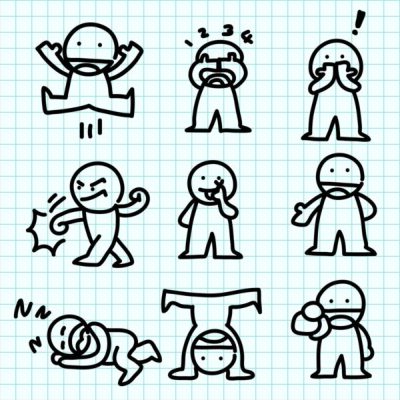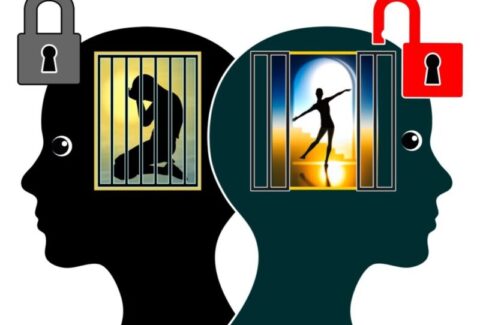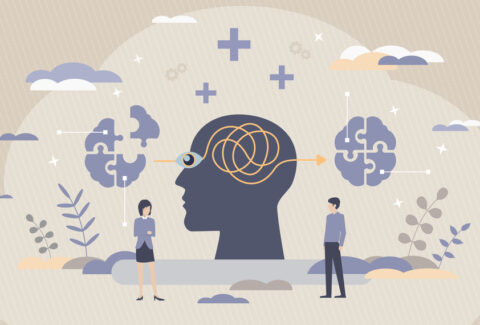Schema Modes in Transformation
In the intricate tapestry of the human psyche, emotions dance like vibrant threads, weaving a complex and nuanced narrative. At the heart of this emotional landscape lie schema modes[1], dynamic states that shape our responses, interactions, and self-perception. Journey with us as we explore the profound impact of schema modes in the transformative odyssey of Schema Therapy[2].
Embracing the Shifting Hues of Emotion
Imagine the emotional spectrum as a canvas where colors meld and shift—a canvas painted with schema modes.[3] These modes encapsulate moment-to-moment emotional states, each a distinct hue revealing facets of our inner selves. From the vulnerability of the child to the assertiveness of the protector, schema modes illuminate the diversity within.
The Tapestry of Early Maladaptive Schemas
Embedded within each mode is a narrative, a story rooted in early maladaptive schemas.[4] These enduring patterns, born from unmet emotional needs in childhood, influence how we perceive the world and respond to its ebbs and flows. To understand schema modes is to unravel the threads connecting us to our emotional origins.
Vulnerable Child Mode: Echoes of Innocence
In the Vulnerable Child mode[5], we encounter echoes of innocence and fragility. Emotions of sadness, fear, and longing intertwine, painting a portrait of the young and tender aspects of the self. This mode beckons us to explore the depths of our emotional reservoirs.
Angry Protector Mode: A Defensive Stance
With the Angry Protector mode, assertiveness takes center stage—a defensive stance forged to shield against perceived threats. Anger becomes the armor, and aggression becomes the shield. This mode challenges us to confront our protective mechanisms.[6]
Detached Protector Mode: The Armor of Independence
The Detached Protector mode[7] unfolds as emotional detachment—a self-sufficient armor shielding against vulnerability. In this mode, walls rise to keep connection at bay, prompting reflection on the cost of emotional isolation.
Happy Child Mode: Rediscovering Joy
The Happy Child mode[8] invites us to rediscover joy, spontaneity, and wonder—the unbridled exuberance of a carefree child. Here, the tapestry is woven with threads of positivity and delight, prompting a reconnection with our capacity for happiness.
Therapeutic Alchemy: Dialogues and Integration
Enter the therapeutic space, where dialogues with these modes become a form of alchemy. Therapists engage in conversations with different aspects of the self, unraveling the stories and untangling the knots. This dialogue fosters awareness, a cornerstone in the transformative process.
Transformative Integration: Weaving a New Narrative
The goal of Schema Therapy[9] is not merely to observe these modes but to integrate and transform them. It is an artful process of weaving a new narrative—one that acknowledges the past, navigates the present, and charts a course for a more adaptive future.
Liberation through Understanding: The Healing Power
Understanding schema modes is an avenue to emotional liberation. By unraveling the threads that bind us to maladaptive coping, we open ourselves to the healing power of self-awareness. Schema modes become signposts guiding us toward a more authentic and balanced existence.
Embracing the Journey: A Tapestry Unfolding
As we navigate the emotional landscape through schema modes, we embrace the journey of self-discovery and transformation. The tapestry of the self-unfolds, revealing the intricacies of our emotional architecture. In each mode, we find an opportunity for growth, healing, and the profound art of becoming whole.
Schema Therapy[10] offers a solution where Cognitive Behavioral Therapy may have fallen short. It integrates various evidence-based practices, including attachment theory, psychodynamic psychotherapy, mindfulness, and Gestalt therapy. This holistic approach blends the best of each method to engage clients effectively.
[1] Arntz, Arnoud, and Gitta Jacob. Schema therapy in practice: An introductory guide to the schema mode approach. John Wiley & Sons, 2017.
[2] Edwards, David John Arthur. “Using schema modes for case conceptualization in schema therapy: an applied clinical approach.” Frontiers in psychology 12 (2022): 763670.
[3] Rafaeli, Eshkol, Offer Maurer, and Nathan C. Thoma. “Working with modes in schema therapy.” Working with emotion in cognitive behavioral therapy: Techniques for clinical practice (2014): 263-287.
[4] Bär, Andreas, et al. “Early Maladaptive Schemas and Schema Modes in clinical disorders: A systematic review.” Psychology and Psychotherapy: Theory, Research and Practice 96.3 (2023): 716-747.
[5] Roelofs, Jeffrey, Peter Muris, and Jill Lobbestael. “Acting and feeling like a vulnerable child, an internalized “bad” parent, or a healthy person: The assessment of schema modes in non-clinical adolescents.” Journal of personality disorders 30.4 (2016): 469-482.
[6] Gülüm, İ. Volkan, and Gonca Soygüt. “Dysfunctional parenting and psychological symptomatology: An examination of the mediator roles of anger representations in the context of the schema therapy model.” Psychological Reports 125.1 (2022): 110-128.
[7] Jacob, Gitta. “The schema mode model in personal therapy.” The Wiley‐Blackwell Handbook of Schema Therapy: Theory, Research, and Practice (2012): 463-471.
[8] Siddique, Meh Para, and Rubina Hanif. “Better Late than Never: An Interplay of Hope and Child Schema Modes among Young Adults.” Int. J. Innov. Creat. Chang 15 (2021): 1079-1090.
[9] Martin, Rachel, and Jeffrey Young. “Schema therapy.” Handbook of cognitive-behavioral therapies 317 (2010).
[10] Young, Jeffrey E., Janet S. Klosko, and Marjorie E. Weishaar. “Schema therapy.” New York: Guilford 254 (2003): 653-658.







